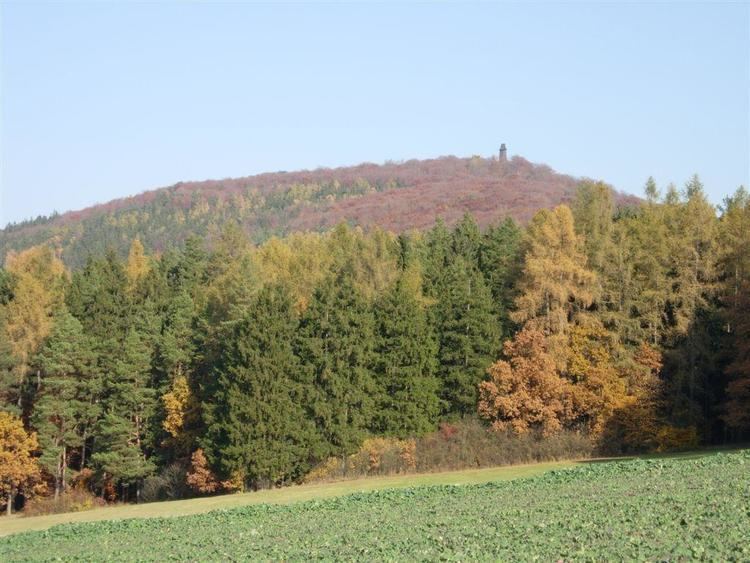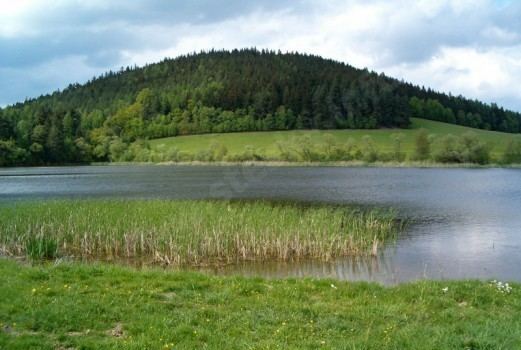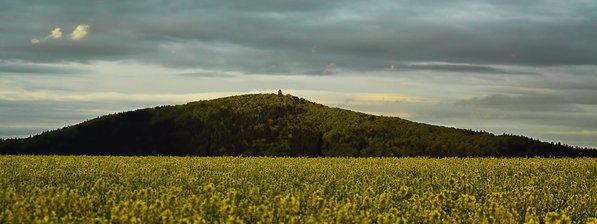Mountain range Mladovožická pahorkatina | Elevation 638 m Parent range Mladovožická pahorkatina | |
 | ||
Similar Říp Mountain, Boubín, Kleť, Milešovka, Radhošť | ||
Bed ich smetana m vlast my fatherland 6 blan k rafael kubel k
Blaník (Czech: [Blaɲiːk]) is a mountain emblazoned with legends, in the Czech Republic near Louňovice pod Blaníkem. The hill and surrounding area is a nature reservation. The Blaník massif consists of two forested rocky hills, the Great Blaník (638 m) and the Small Blaník (580 m).
Contents
- Bed ich smetana m vlast my fatherland 6 blan k rafael kubel k
- Bal nem z vla imi na velk blan k se spole nost bohemia bal n s r o dne 16 8 2016
- Great Blank
- Small Blank
- Legend
- In popular culture
- References

Bal nem z vla imi na velk blan k se spole nost bohemia bal n s r o dne 16 8 2016
Great Blaník

In the 5th century BC, during the Hallstatt period was at Great Blaník a Celtic Oppidum in circular shape with two rows of huge stone walls whose remains are still visible around the top, later stronghold and probably a wooden castle. The year 1404 was the beginning of the pilgrimages to the mountain. One of the traditions of local residents is New Year's Eve ascent of the mountain. In the years 1868-1871 there were held a camps requesting the Czech state law. From there has been broken off in 1868 one of the foundation stones of the National Theatre in Prague (1750 kg). At the top stands 30 m high wooden observation tower from 1941 in the shape of a Hussite watchtower.
Small Blaník

At the top lie remains of a medieval castle. At the Small Blaník (formerly Bare Hill) are also the ruins of the pilgrimage chapel of St. Mary Magdalene, construction was completed in 1753. Then abolished in 1783 by decree of the Emperor Joseph II. Below it used to be a cave with hermit, in the middle of the ruins today grows a huge old spruce about 160 years old, which is called the "Monk".
Legend

An ancient legend says that a large army of Czech knights led by St. Wenceslas sleeps inside the mountain. The knights awaken to help the Motherland when it is in great danger. According to the legend, when this happens, Blaník's trees will dry out but an old, dead oak tree under the mountain will turn green and a small spring by the mountain will become a river. Then during an epic battle between the Czechs and their overwhelming enemy the Blaník knights will come to their aid led by St. Wenceslas on his white horse. The enemy will retreat to Prague where they will finally be defeated. Day in the mountain is long as a year on the surface.

The legend arose probably in the 15th century among people based on an event, when miraculously at the southeast foothills of Blaník, near the village of Býkovice, was defeated more numerous enemy army.

The legend says that Good King Wenceslas and his knights will arise from their slumber when the Czechs are attacked by a number of armies equal to or greater than four (from four cardinal directions).
Since 1989 there are regularly held St. Wenceslas Celebrations, at his feast St. Wenceslas on white horse accompanied by his troops arrives from the mountain to Louňovice square where are held celebrations.
In popular culture
Alois Jirásek portrayed Blaník legend in his Ancient Bohemian Legends. Mountain with its symbolism also provide theme to a number of musicians and painters in the 19th century. In the Jára Cimrman's comedy play Blaník, it was proved that this legend is not true because in 1968 at the end of the Prague Spring Czechoslovakia was attacked by five armies of the Warsaw pact and "in Blanik not a single leg moved".
